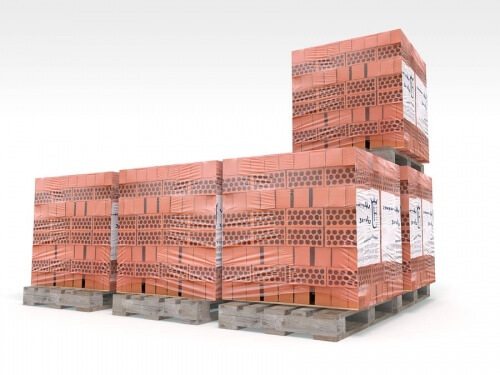The Density or Freight Class Argument
The ongoing debate regarding the use of density or freight class pricing is a heated one. Freight class proponents argue that the freight class system is more accurate and is a fairer system for all. Opponents of the NMFC freight class method argue that it is way too confusing and outdated and that a clearer method should be adopted. No matter what side you stand on regarding this issue there are pros and cons to both methods. The long-established freight classing method is outdated and cumbersome with its 18 different freight classifications of class 50 to class 500. This faction of initiators of LTL volume shipments considers freight classed transport outdated and inefficient for cost-effective and reliable commercial shipping today. However, company officials who favor use of the freight classed shipping method argue that freight classed transport facilitates accurate pricing and more secure storage and handling of commodities in transit. They say that this method of transport ensures delivery of fewer damaged products with fewer liability procedures resulting. Since there are valid arguments pro and con for both shipping modes, which one will win the vote? Is it time to update the old rule today?
Major features and advantages of Freight Classed Shipping
Freight class is a category for freight established by the National Motor Freight Traffic Association (NMFTA) and sometimes listed as “NMFC: National Motor Freight Classification.” Each shipment class is defined by its contents, and different transport costs are assigned according to product type being shipped. The product type in each shipment is assigned an item number, also determined by the NMFTA. Every item number has a freight classification, and once the item number and freight classing is set for a shipment, this data is registered in the NMFC tariff cataloging system for freight carriers. LTL carriers in the U.S. calculate freight charges based on the NMFC tariff designations.
If you or your company ship products regularly, you know the NMFTA classifies product loads by examining four product characteristics: weight, storability, handling and liability. There are currently 18 separate freight classifications, from class 50 (the least costly) to class 500 (the most costly). A primary advantage of freight classed shipping is that although detailed and complex with its 18 different classes, it is well organized as a method of processing and pricing product loads for shipment. Each product is clearly defined and categorized prior to being registered in the NMFC tariff listing for the carrier. This procedure promotes accurate pricing and safe shipping conditions for each product category once the classification is noted for use by the shipment transporter. It also facilitates proper handling of loads while they are being readied for transport and until each one is delivered to its destination. Especially when large numbers of loads are being delivered to a busy company receiving department or dock entry point, each shipment’s clear freight classing according to product type can be very helpful in avoiding confusion and mishandling of load contents.
Potential problems and disadvantages of shipping by Freight Class
A number of companies that make regular product shipments have expressed dissatisfaction with use of freight classed shipping for their LTL volume shipments. These concerns and complaints include the following issues:
- Incorrect Classification of Freight. – Because the NMFC classification system now in effect is complicated with 18 different freight classing designations, even experienced shipping agents and departments for companies placing shipment orders can use the wrong class number by mistake. This error may cause mishandling of load contents during shipment resulting in damaged goods, financial losses for the shipper and the possibly a dissatisfied customer at the point of delivery.
- Incorrect Pricing of Shipments. – If product shipments are priced incorrectly due to use of the wrong NMFC classification numbers,these loads will each receive an incorrect freight quote or be incorrectly priced by the client shipper, and this client may be excessively overcharged for the shipment.
- Necessary Reclassification by Carrier. – The majority of carriers will detect an incorrect shipment classification number, re-classing the load properly before shipping. Although this will facilitate proper storage and handling of loads before and during transport, it will also result in higher costs being charged to the company sending the shipment.
- Greater Costs for Lighter Loads. – Although shipments processed and priced according to density are assigned prices based solely on their dimensions and weight, the freight classing system for shipping is determined by the four factors of weight, storability, handling and liability. With freight classed shipping, some commodities of lesser density are more expensive to ship than loads that are much heavier when shipped to the same destination.
Main aspects and benefits of Density Shipping
Density based shipping classification is determined according to pounds per cubic foot of a transport load. According to this load classing method, a commodity shipment of lower density can be assigned a higher shipping class number because it will require more space per pound during transport. Although it can result in higher costs for some shipments, the density based method is decidedly easier for calculating costs. For instance, when shipping paper products, you will discover that the NMFC classification method lists 138 different class numbers for paper items. Having to decide which of these numbers is appropriate for each paper load shipped can cause even very experienced shipping managers confusion and delays in placing product transport orders with carriers. The simpler density based form of determining shipping class seems much easier and more efficient to these managers.
Possible problems and disadvantages of Density Based Shipping
Supporters of the established freight classed type of shipping as determined by the NMFC are voicing several reasons for disregarding use of a density based system of product load classification for shipping purposes. These reasons given include the following:
- Higher Pricing of Lower Density Shipments. – Density based shipping classification is determined according to pounds per cubic foot of a transport load. According to this freight classing method, a commodity shipment of lower density can be assigned a higher shipping class number and price than one of higher density because it will require more space per pound during transport.
- Higher Frequency of Incorrect Classing. – Some long-time manufacturers and product shippers argue that with density based shipping, which is calculated solely on load density as calculated by pounds per cubic foot, there is more chance of error in shipment classification due to mathematical mistakes. Even though computerized calculators are normally used in figuring density, mistakes in calculating still often occur. Products incorrectly classed may be mishandled or improperly stored during the load intake, shipping and delivery process by the carrier.
- Incorrect Pricing of Shipments. – Shipments that are incorrectly classified by the density classification process will be given the wrong freight quote for pricing, and the client shipper may pay higher costs than necessary for these shipments unless the error is caught. Detractors of density classing state that errors are more frequent when shipment costs are evaluated only on density.
In the 2013 NMFC guide for shipping, about 350 items listed were classified according to density. Due to this change, there is reason to expect future progression toward a simpler density based shipment classing and freight quote system. Until this occurs, a combination of the two methods of classification, density based and freight class, will still be in use with the choice left to the discretion of each company sending LTL volume shipments of commodities via professional carrier.
With these tips you should have a safe and pleasant experience using a freight service company such as Freight-Specialist. We recommend that you consult with us prior to having your shipment scheduled for pickup if you have any doubts or concerns.






